Wallpaper is a popular way to add a touch of personality and style to any room in your home. With its endless colors, patterns, and textures, wallpaper can transform a space from bland to beautiful in no time.
Is your wallpaper looking outdated, and do you want to give your walls a fresh look? Removing wallpaper can be daunting, but it can be done easily with the right techniques. Here we will discuss six tips for how to remove wallpaper, including identifying your wall type and using a putty knife to remove stubborn pieces.
We will also cover removing the wallpaper glue before painting or re-wallpapering. Additionally, we will share some other methods, like using a wallpaper steamer or scoring and chemical stripper, that you can try for removing wallpaper.
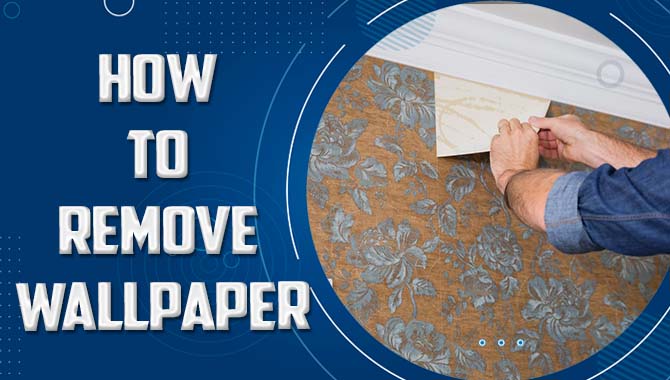
How To Remove Wallpaper With 6 Tips
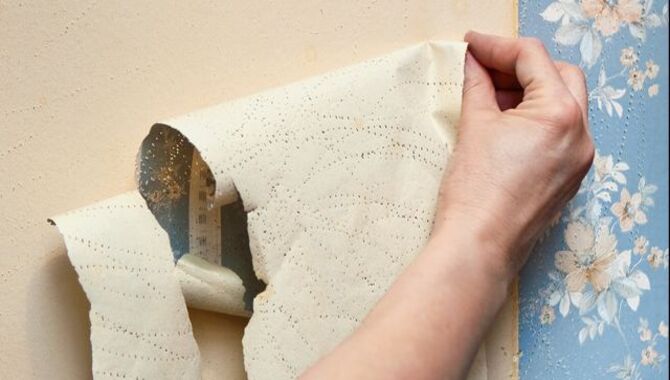
Wallpaper is a popular choice for interior design because of its versatility and ability to add personality to any room. Removing old wallpaper from your walls can be daunting if you don’t know where to start.
Don’t worry; we’re here to help. Follow these six tips for an easy and efficient way how to remove wallpaper without damaging your drywall, plaster walls, or electrical outlets. Start by preparing the room by removing furniture and covering floors with a drop cloth.
1. Identify Your Wall Type
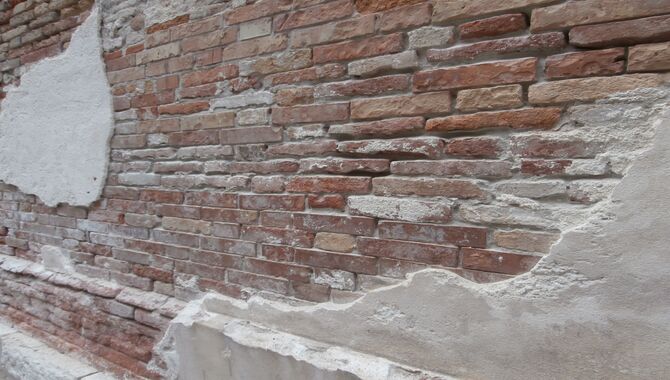
When removing wallpaper, it’s important to identify your wall type for a successful outcome. You’ll typically find one of three types – drywall, plaster, or brick/concrete walls. Drywall is the most common type, but it requires careful handling during wallpaper removal to avoid damage.
Plaster requires a more delicate approach as it can easily crack or crumble with too much force. Brick or concrete may need additional tools to remove wallpaper successfully. Knowing your wall type lets you choose the best tools and techniques for an easy and hassle-free process.
2. Prep Before Painting Or Re-Wallpapering
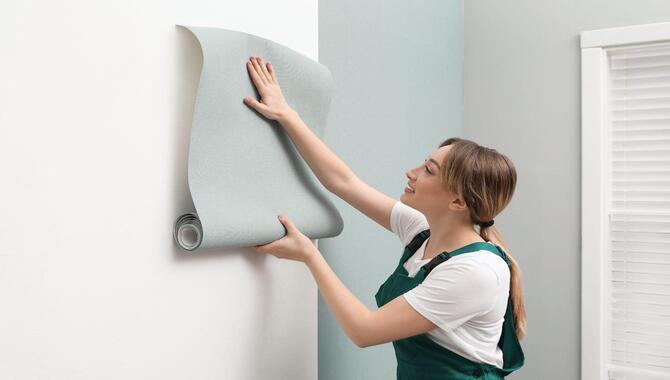
Before applying new wallpaper or painting your walls, prepping them is crucial for achieving excellent results. Start by protecting your floors and furniture with drop cloths or plastic sheeting. Use a scoring tool or sandpaper to create small holes in the wallpaper for better solution penetration.
Apply warm water and wallpaper removal solution to the surface with a spray bottle or sponge and allow it to soak in before removing it with a scraper or putty knife. Ensure you clean your walls thoroughly after removing all traces of old wallpaper glue and backing using warm water and dish soap. Remember to work slowly and carefully to avoid causing any damage.
3. Start Steaming At A Bottom Seam
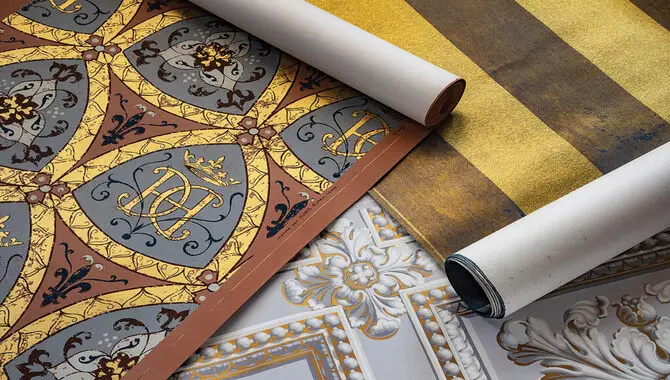
To make the process of removing wallpaper easier and smoother, it is crucial to start steaming at a bottom seam. This will help loosen the adhesive and simplify peeling off your old wallpaper. Along with using a steamer, you can also try scoring your wallpaper with a scoring tool or using a scraper or putty knife to remove any stubborn spots that are tougher to get off.
Just remember to protect your floors and furniture before starting the removal process. After removing your old wallpaper, don’t forget to clean the walls thoroughly before applying new paint or wallpaper.
4. Alternate Between Steaming On Top Of The Paper & Under It
Alternate between steaming on top and under the paper for successful wallpaper removal to loosen the adhesive. Before steam application, use a scoring tool for better penetration of adhesive. Ensure protection for floors and furniture by using drop cloths or plastic sheets.
You can try a wallpaper removal solution or fabric softener mixed with hot water for extra effectiveness. Take precautions when working in small sections, and don’t rush the process to avoid wall damage. With these tips, removing the wallpaper will be an easy DIY project that will give you a good idea for a fresh coat of paint or a new wallpaper makeover.
5. Use A Putty Knife To Help With More Stubborn Pieces
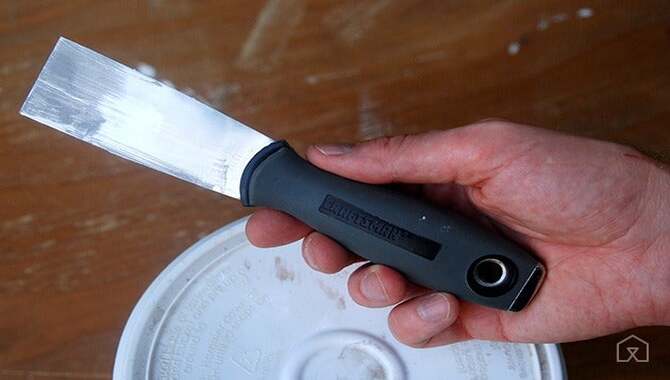
Removing wallpaper can be daunting, but it becomes easy with the right tools and techniques. A sharp putty knife is handy when tackling stubborn spots of old wallpaper that won’t budge. Gently scraping the tool against the wallpaper at an angle, it lifts away from the wall without damaging it.
Use adhesive remover or warm water on tougher spots before applying the putty knife for the best results. Always work slowly and carefully to avoid causing any damage to your drywall or plaster walls.
6. Remove The Wallpaper Glue
When removing wallpaper, it’s crucial to remove all traces of the glue before painting or re-wallpapering. However, before applying any chemicals to remove the glue, testing them on a small wall area is recommended first. Remember to follow safety measures like wearing gloves and protective eyewear while working with chemicals. Achieving a smooth and even finish for your walls depends on how effectively you remove the residue.
Other Methods To Try For Removing Wallpaper
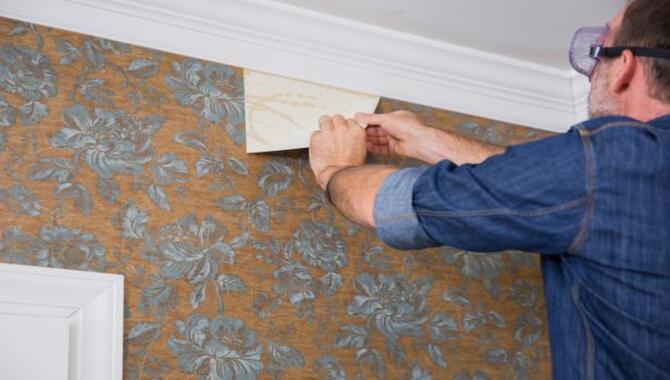
If you’re wondering on removing wallpaper, various methods are available for you to try out. One technique is utilizing a steamer that loosens the adhesive, removing the wallpaper easily. You can also mix fabric softener with hot water and apply this to the wallpaper surface for great results.
An efficient alternative would be creating a mixture of vinegar and hot water or applying warm water mixed with a reliable wallpaper removal solution using a spray bottle or sponge. For more challenging areas, consider using sandpaper or tools such as a scraper or putty knife to help you with the task. If you use chemical strippers, please ensure your safety by following all necessary precautions.
A Wallpaper Steamer
Removing wallpaper can be daunting, but using a wallpaper steamer can make it much easier. By following the manufacturer’s instructions and wearing protective gear such as gloves and goggles, you can avoid damaging your walls and achieve great results. A steamer is particularly useful for removing multiple layers of stubborn wallpaper or those with an adhesive that has hardened over time.
Scoring + Chemical Stripper
To remove wallpaper effectively, try combining Scoring and Chemical Strippers. Scoring involves creating small holes in the wallpaper using a scoring tool, which allows the stripping solution to penetrate deeper into the glue.
This makes it easier to remove different types of wallpapers, such as vinyl or those with paper backing. You can then use Chemical Strippers, specifically designed for removing wallpaper, following all safety precautions and instructions while wearing protective gear. The easiest way is to combine both methods while removing old wallpaper from plaster walls or Drywall.
Hot Water In A Spray Bottle
For removing wallpaper, using hot water is one of the easiest ways. To start with this method, spray warm water on the paper backing and let it sit for a few minutes to soften the adhesive. Use light pressure with a scraper or putty knife and peel off the top layer of wallpaper slowly.
Add fabric softener or vinegar to the warm water solution for better cleaning. Taking precautions while performing DIY projects at home is always good, like covering baseboards and electrical outlets with painter’s tape or removing outlet covers before starting work.
Secrets To Reinventing Your Home On A Budget

Updating your home on a budget can be challenging, but removing old wallpaper is an affordable and effective solution that instantly transforms any room. The easiest way to remove wallpaper is by using a scoring tool combined with a chemical stripper, preferably one designed for your type of wallpaper.
Consider renting a steamer to speed up the process and make it less messy. Once you’ve removed the top layer of wallpaper, sanding the walls with sandpaper or dish soap will help remove any leftover residue or paste.
To prevent damage to plaster walls or electrical outlets, use painter’s tape and outlet covers before scraping off the backing. For best results, work in small sections at a time. And don’t forget to lay down drop cloths to catch any mess. Try using removable or strippable wallpaper that doesn’t require adhesive paste as an easy alternative. With these tips in mind, updating your space has never been easier or more affordable.
Conclusion
Wallpaper is a great way to add personality and style to any room. Unlike paint, wallpaper comes in various patterns, textures, and designs that can help create a unique atmosphere in your home or office. Removing wallpaper can seem overwhelming, but it can be done easily with the right technique, tools, and patience.
Whether you use a steamer or a chemical stripper, the key is to work systematically and carefully. Once the wallpaper is removed, you have a blank canvas to reinvent your space on a budget. You can paint the walls a new color or add temporary wallpaper for a quick refresh without breaking the bank. We hope now you understand how to remove wallpaper.
Frequently Asked Questions
[rank_math_rich_snippet id=”s-7230b41d-d3f0-48e6-a776-00ef04c1ba49″]

I am passionate about home engineering. I specialize in designing, installing, and maintaining heating, ventilation, and air conditioning systems. My goal is to help people stay comfortable in their homes all year long.
